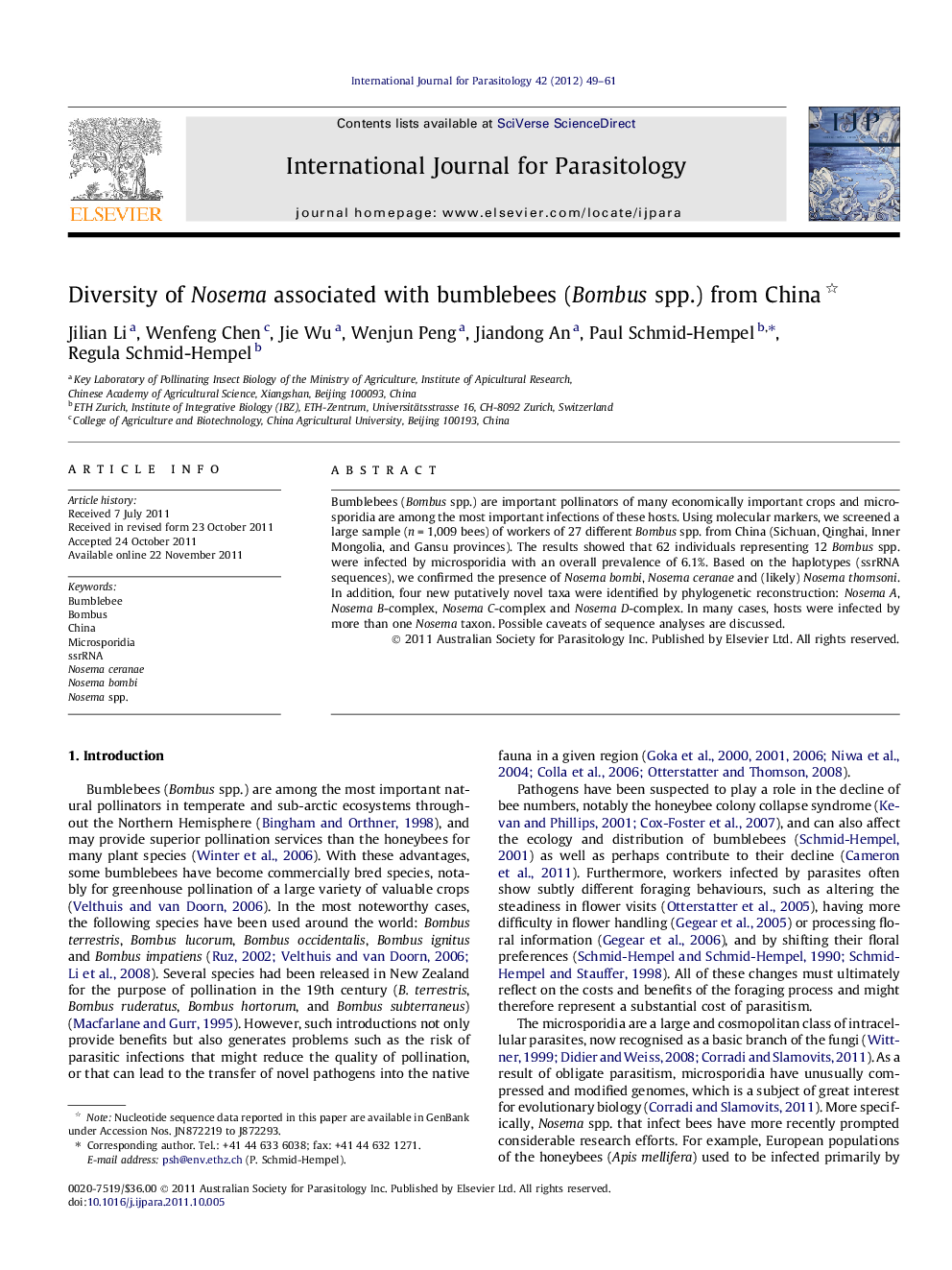| Article ID | Journal | Published Year | Pages | File Type |
|---|---|---|---|---|
| 2436131 | International Journal for Parasitology | 2012 | 13 Pages |
Bumblebees (Bombus spp.) are important pollinators of many economically important crops and microsporidia are among the most important infections of these hosts. Using molecular markers, we screened a large sample (n = 1,009 bees) of workers of 27 different Bombus spp. from China (Sichuan, Qinghai, Inner Mongolia, and Gansu provinces). The results showed that 62 individuals representing 12 Bombus spp. were infected by microsporidia with an overall prevalence of 6.1%. Based on the haplotypes (ssrRNA sequences), we confirmed the presence of Nosema bombi, Nosema ceranae and (likely) Nosema thomsoni. In addition, four new putatively novel taxa were identified by phylogenetic reconstruction: Nosema A, Nosema B-complex, Nosema C-complex and Nosema D-complex. In many cases, hosts were infected by more than one Nosema taxon. Possible caveats of sequence analyses are discussed.
Graphical abstractFigure optionsDownload full-size imageDownload high-quality image (66 K)Download as PowerPoint slideHighlights► The first known reported large-scale study of microsporidians (Nosema spp.) present in Chinese bumblebees (Bombus spp.). ► In addition to known Nosema bombi, Nosema ceranae and presumably Nosema thomsoni are also found. ► Based on the ssrRNA partial sequence, up to four new taxa of Nosema-related microsporidia appear to be present in Bombus. ► The high diversity of microsporidia likely reflects the evolutionary origin of the Bombus clade in Western China.
